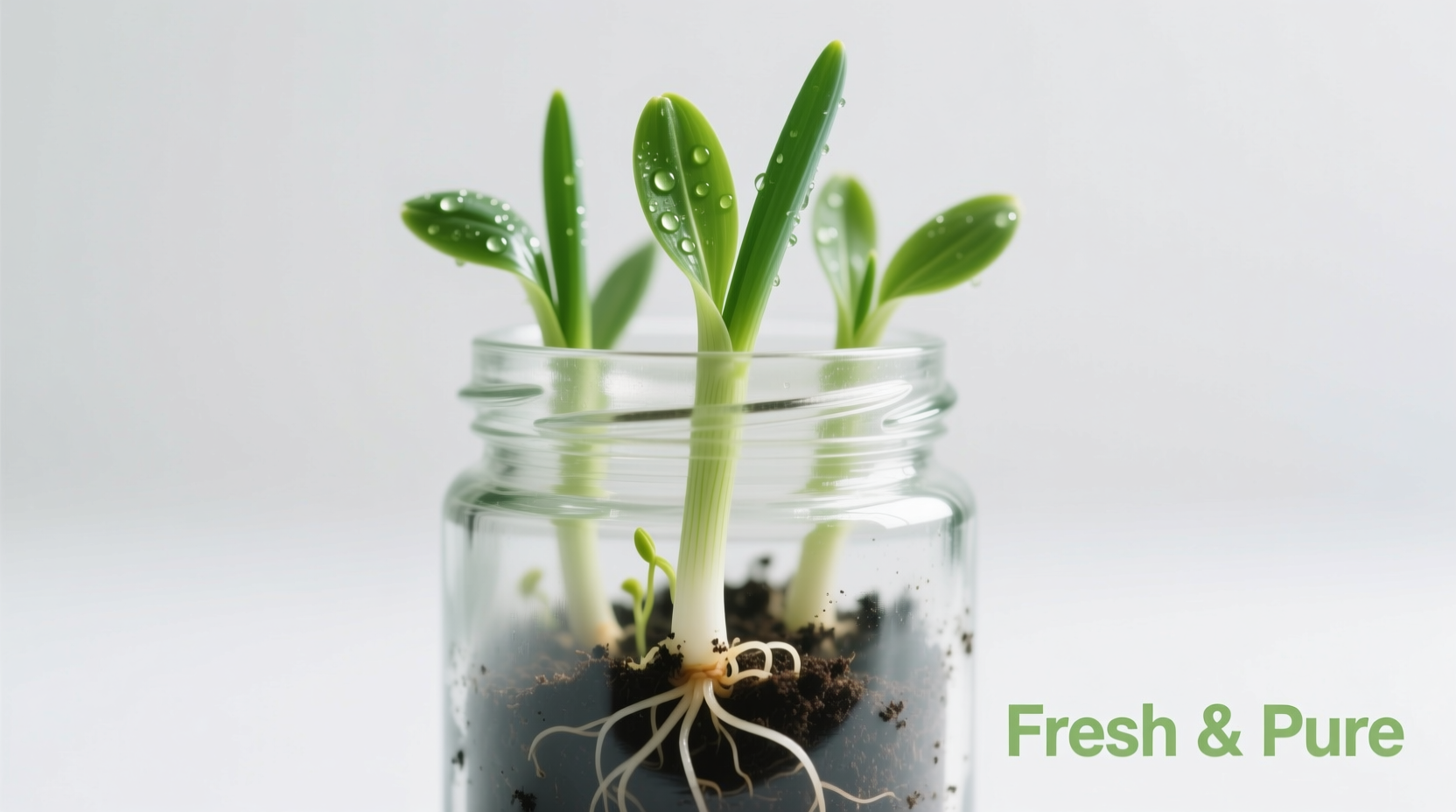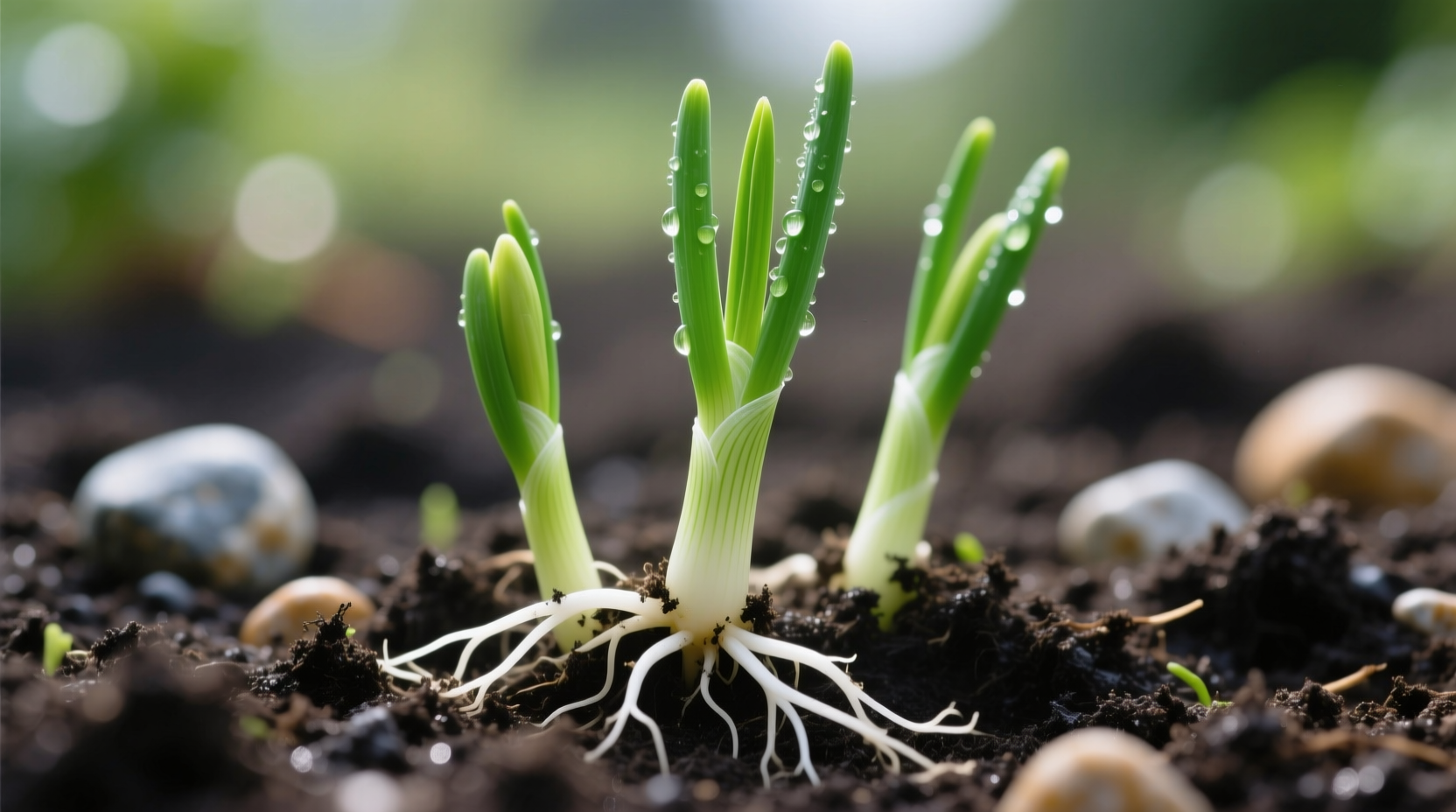Discover how to transform grocery store green onions into a continuous harvest of fresh sprouts with just water and sunlight. This complete guide reveals the foolproof water method that yields restaurant-quality sprouts in under two weeks—no soil, seeds, or special equipment required.
What Exactly Are Green Onion Sprouts?
Green onion sprouts represent the regrowth phase of Allium fistulosum (bunching onion), distinct from both mature green onions and true sprouts like alfalfa. When you place the white root end in water, it produces new green shoots within days. Unlike store-bought sprouts that come from seeds, these are actually regrown mature plants.
| Feature | Green Onion Sprouts | Scallions | Chives |
|---|---|---|---|
| Botanical Name | Allium fistulosum regrowth | Allium fistulosum | Allium schoenoprasum |
| Flavor Profile | Mild, fresh onion | Stronger onion bite | Delicate, grassy |
| Growth Time | 7-10 days | 70-80 days | 75-90 days |
| Vitamin C Content | 32mg per 100g | 24mg per 100g | 15mg per 100g |
Data source: USDA FoodData Central
Why Home Regrowth Beats Store-Bought Every Time
Commercial green onion sprouts typically cost $3.50-$5.00 per small container at specialty markets. By regrowing your own from grocery store green onions, you achieve significant savings while gaining superior freshness. The flavor difference becomes immediately apparent—home-grown sprouts deliver a clean, vibrant onion essence without the bitter notes that sometimes develop in commercially packaged varieties.
The Water Regrowth Method: Step-by-Step
This soil-free technique works with any green onion purchased from your local market. Follow these steps for continuous harvests:
- Preparation: Cut 1-2 inches above the root end, keeping the white portion intact
- Container selection: Use a narrow glass or jar that holds the onion upright
- Water level: Fill with ½ inch of water—enough to cover roots but not submerge the white stem
- Light requirements: Place on a sunny windowsill (south-facing preferred)
- Maintenance: Change water every 2 days to prevent bacterial growth
| Day | Visible Changes | Action Required |
|---|---|---|
| 1-2 | Roots begin extending | Ensure water covers roots |
| 3-4 | New green growth appears | Change water, check light |
| 5-7 | Shoots reach 3-4 inches | Monitor growth rate |
| 8-10 | Ready for harvest | Cut 1 inch above white base |
Source: University of Minnesota Extension Home Gardening Guidelines
Harvesting for Maximum Regrowth Potential
Proper harvesting technique determines whether your green onion sprouts will continue regrowing. Always cut 1 inch above the white bulb using sharp scissors—never pull the sprouts. This preserves the growing point and allows for 3-4 harvest cycles before the root loses vitality. The second and third harvests often produce even more vigorous growth than the initial sprouting.
Culinary Applications: Where Sprouts Shine
Green onion sprouts excel in applications where fresh, mild onion flavor enhances without overwhelming. Their delicate texture makes them ideal for:
- Finishing touch on Asian noodle dishes (ramen, udon, soba)
- Raw applications like salads and spring rolls
- Infusing oils and vinegars
- Garnishing soups just before serving
- Blending into compound butters
Unlike mature green onions, these sprouts should generally be added at the very end of cooking. Their delicate structure breaks down quickly with heat exposure—typically just 30 seconds in a hot pan is sufficient to warm them while preserving their fresh flavor.
Nutritional Powerhouse in Your Kitchen
According to USDA nutritional analysis, green onion sprouts contain higher concentrations of certain nutrients compared to their mature counterparts. The regrowth process triggers increased production of vitamin C (32mg per 100g vs 24mg) and allicin, the compound responsible for many of onions' health benefits. These sprouts also provide significant amounts of vitamin K (117% of daily value per 100g) and folate.
Food safety note: Always rinse sprouts thoroughly before use. The FDA recommends consuming home-grown sprouts within 5 days of harvest for optimal safety and quality.
Troubleshooting Common Growing Issues
Yellowing tips indicate insufficient light—move to a brighter location. Slimy roots mean water isn't being changed frequently enough. If growth slows after multiple harvests, the root has exhausted its energy reserves—simply start a new batch with fresh green onions. Never use sprouts with mold or foul odors.

Storing Your Harvest Properly
For best results, store cut sprouts in an airtight container lined with a damp paper towel in your refrigerator. They'll maintain peak quality for 3-5 days. For longer storage, freeze chopped sprouts in ice cube trays with water or oil—though this method works best for cooked applications as the texture changes upon thawing.
Seasonal Considerations for Year-Round Supply
During winter months with limited natural light, supplement with a basic grow light (12-16 hours daily) to maintain growth rates. In summer, protect from intense afternoon sun which can cause premature bolting. The ideal temperature range for consistent growth is 60-75°F (15-24°C).
Environmental Impact of Home Regrowth
By regrowing green onions, you significantly reduce food waste and packaging. Each root end that would typically be discarded produces 3-4 harvests, effectively tripling your yield from a single purchase. This simple practice aligns with sustainable kitchen practices promoted by the Natural Resources Defense Council's Waste Free Kitchen Handbook.











 浙公网安备
33010002000092号
浙公网安备
33010002000092号 浙B2-20120091-4
浙B2-20120091-4